Wild Birds Program
Wild Birds Program
Wild bird populations have declined significantly – since 1970, one in every four songbirds has been lost (Axelson, G. 2019. Cornell Lab of Ornithology). The Zoological Society is committed to conserving wild bird populations through a variety of conservation activities aimed at monitoring species, providing resources, and educating the public through outreach programming. In partnership with the Milwaukee County Zoo, the Wild Birds Program goal is to conserve wild bird species in Southeastern Wisconsin and beyond. Please read below to learn more about how we conserve wild birds and how you can help.
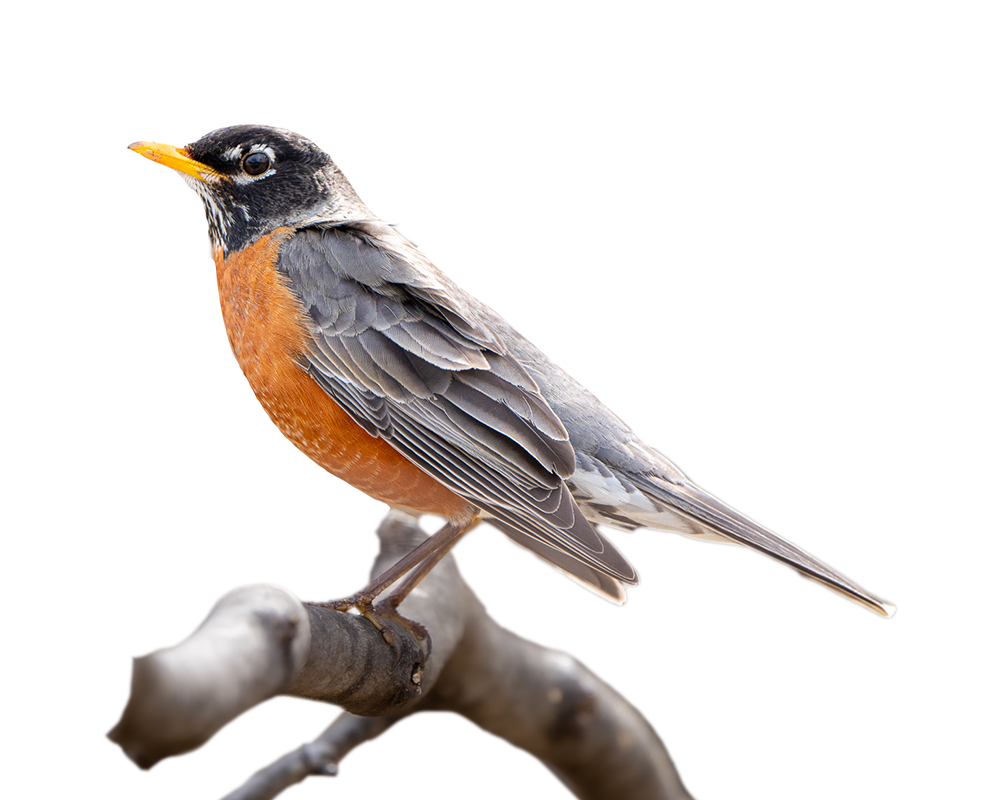
Providing Resources to Wild Birds
With the support of dedicated Zoo Pride volunteers, we provide year-round food resources to wild resident and migratory birds on Milwaukee County Zoo grounds. As you walk through the Zoo, you may notice the seven bird feeder stations. With generous support from the four Milwaukee-area Wild Birds Unlimited stores, we provide bird seed and liquid nectar resources to wild birds who call the Zoo home. Scroll down to see different bird feeders provided by Wild Birds Unlimited to support backyard birds. If you click on the link above, you can access a coupon to use at four Wild Birds Unlimited stores in the greater Milwaukee area to get your backyard bird habitat started!
Bird feeders are no longer just for hobbyists! By providing bird feeder resources to wild birds, you can help conserve bird populations in your backyard or green space. Read through the lists below to learn more about bird feeder and seed types.
Types of Seed
- Black oil sunflower – Attracts most seed-eating birds, such as Black-capped Chickadee, White-breasted Nuthatch, and Northern Cardinal.
- Nyjer seed – Attracts smaller songbird species, such as American Goldfinch, Purple Finch, and Song Sparrow.
- Suet – At the Zoo we use hot pepper suet to deter squirrels. Many different bird species love suet, such as Red-bellied Woodpecker, Downy Woodpecker, and Red-winged Blackbird.
Types of Feeders
We have 5 types of feeders here on MCZ grounds: hopper feeders, finch feeders, suet feeders, oriole feeders, and hummingbird feeders. Some of our feeders are only up during the warmer months (oriole and hummingbird feeders), while our other feeders remain up year-round (hopper, finch, and suet feeders).
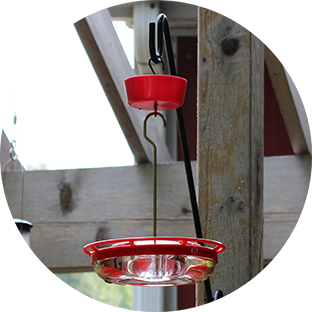
Hummingbird Nectar Feeder
Hummingbird nectar feeders are filled with a sugar-water mixture. The recommended recipe for this feeder type is a sugar-water mixture of 4 parts water to 1 part plain white sugar. These feeders attract hummingbirds and other smaller pollinators and should be cleaned two to three times a week to prevent mold in warmer weather (Audubon Society Hummingbird Feeder FAQs).
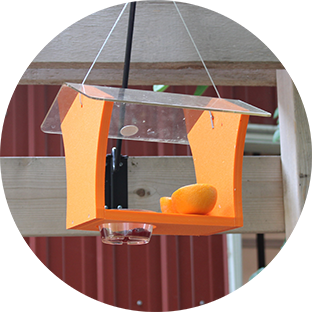
Oriole Orange and Jelly Feeder
Another summer seasonal feeder, most oriole feeders can hold both oranges and jelly dishes. These feeders on average hold one orange (cut in half) and two cups of jelly. It is recommended to fill these feeders with grape jelly made with real sugar (avoid corn syrup and sugar alternatives). You can also buy bird jelly at local nature stores. Later in the season jelly can be replaced for dried mealworms which helps mitigate unwanted stinging insects later in the summer months. These feeders don’t attract just orioles-any frugivore (fruit-eating) bird will enjoy them!
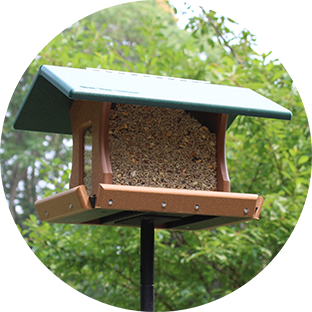
Hopper Feeder
Hopper feeders can be filled with any sort of seed blend that is sold at your local nature store. At the Zoo, we fill our feeders with a blend of black-oil sunflower seed and finch blend, but you can fill these with a fruit and nut mix, safflower seed, or any other kind of seed you so desire. These feeders attract a wide-range of birds, such as White-breasted Nuthatch, Northern Cardinal, Downy Woodpecker, and Blue Jay.
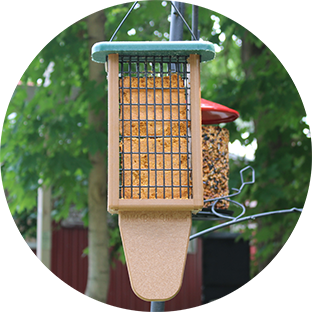
Suet Feeder
There are a few different types and sizes of suet feeders. These feeders are filled with suet which comes in several varieties. Suet is made using animal fat and various seeds or fruits, making it a delicious treat packed with easily digestible energy-resources. These feeders attract a wide variety of birds, including Red-bellied Woodpeckers, Downy Woodpeckers, and Red-winged Blackbirds.
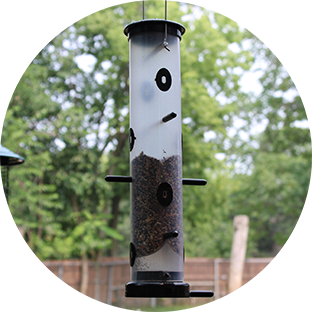
Finch or Tube Feeder
These feeders are best filled with smaller seed types and blends. Finches especially love nyjer seed, which is found in most finch blends or on its own. Depending on the style of tube feeder, you can also fill them with larger seed blends such as black-oil sunflower, safflower, or fruit and nut blends. These feeders attract many different species, including House Finches, American Goldfinches, and Dark-eyed Juncos.
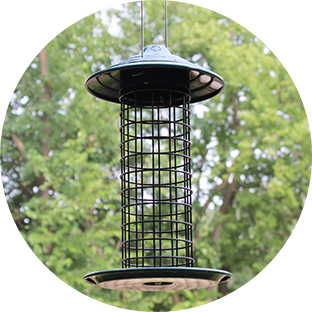
Peanut Feeder
These feeders are filled with unshelled, unsalted peanuts. Lots of larger birds love to crack open the shells, including Blue Jays and woodpecker species. You might also attract squirrels with this style of feeder.
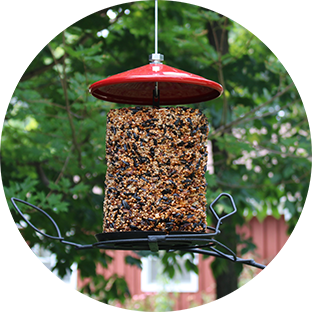
Cylinder Feeder
These feeders are filled with seed discs or cylinders. These discs are caked seed that can come in a variety of blends and types. These discs last around 3 weeks, making this a great option for those that don’t want to fill their seed feeders daily! Depending on the style of cylinder or disc you put on, you will attract a variety of birds, including Black-capped Chickadees, American Goldfinches, and White-breasted Nuthatches.
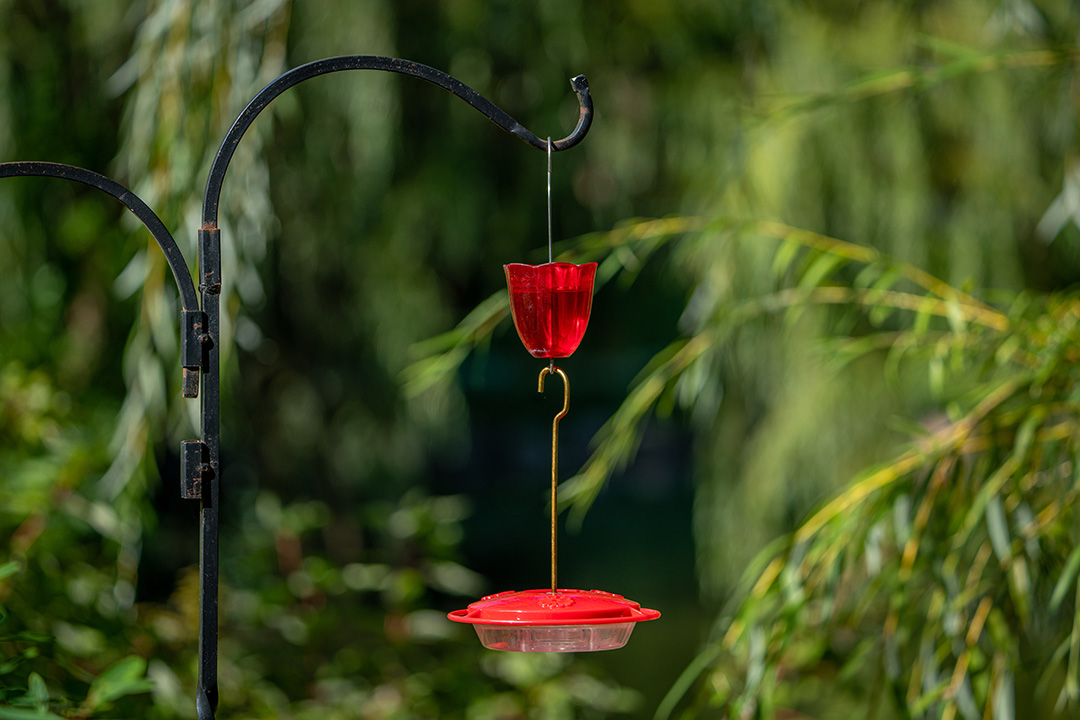
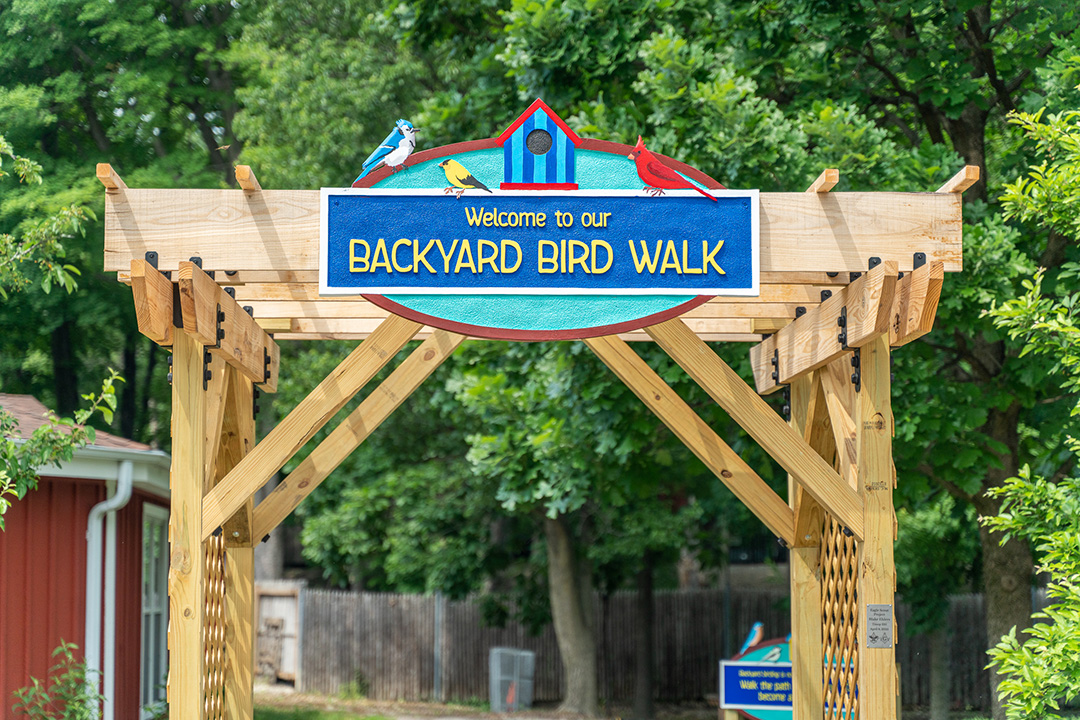
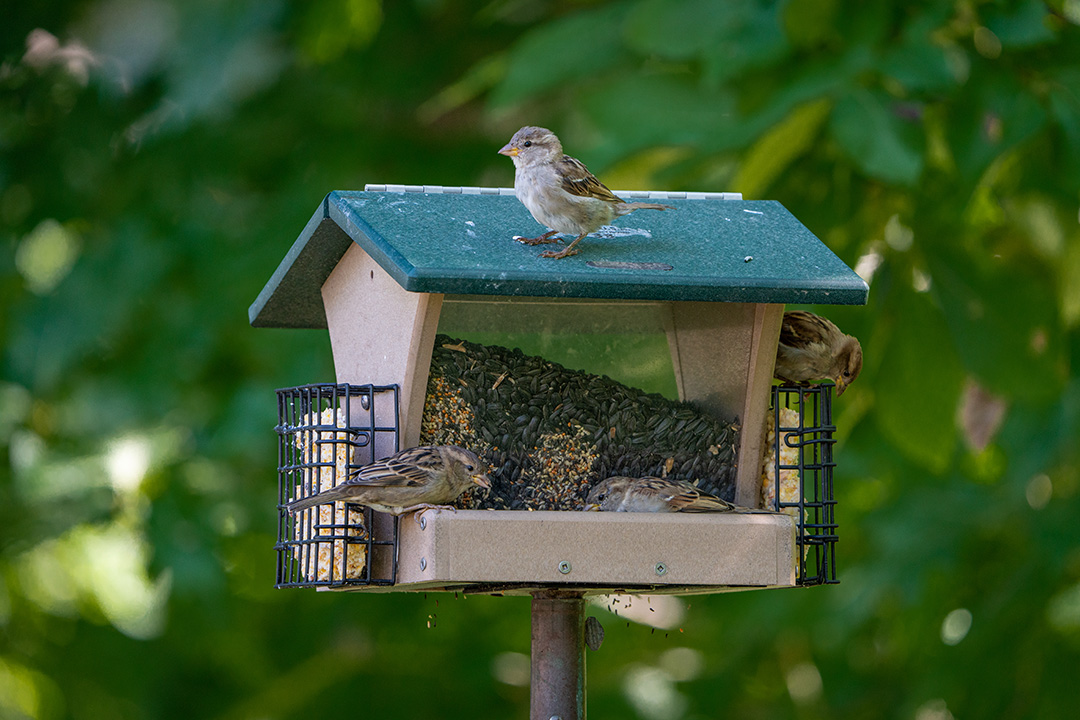
Wild Bird Monitoring on Milwaukee County Zoo Grounds
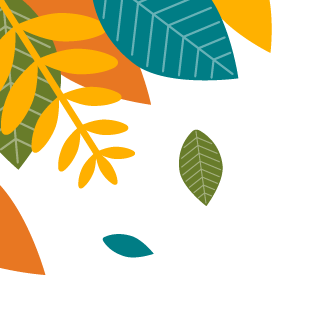
By studying the wild birds that live on Zoo grounds, we contribute phenological data to national research projects that track species distribution and seasonality. Society staff coordinate the following activities, however all are community science-based projects that you can contribute to by studying the wild birds in your own backyard! Read more below to find out how you can support wild bird research. Our Wild Birds Program monitoring activities include weekly point count surveys, nest box reproductive activity monitoring, Project Feederwatch data collection, and participating in global bird count events throughout the year.
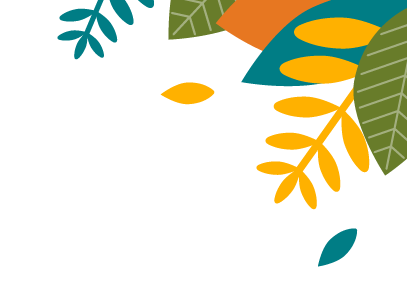
Weekly Point Count Surveys
These surveys are led by our Wild Birds Field Technician. Each survey lasts about two hours and stops at 11 different locations throughout the Milwaukee County Zoo grounds. We record information about each survey and what was seen at each location and upload our data to the Cornell Lab of Ornithology’s eBird database.
Global Bird Count Events
The Great Backyard Bird Count (GBBC) occurs each year in February. This global mass-birding event brings birders together to count native wild bird species. Each year the Zoological Society of Milwaukee hosts a volunteer event for the GBBC on MCZ grounds.
Nest Box Monitoring
There are 36 nest boxes strategically located on Milwaukee County Zoo grounds to best support nesting birds. Our nest boxes are designed to house smaller bird species, such as house wrens, black-capped chickadees, and tree swallows. Our boxes are monitored from Mid-April through the end of August and are checked twice a week by Zoo Pride volunteers. All of the data we collect is uploaded to the Cornell Lab of Ornithology’s Nestwatch database.
Project Feederwatch
Project Feederwatch is a community science opportunity offered through the Cornell Lab of Ornithology. This project focuses on monitoring bird feeder activity during the winter months. Our dedicated Zoo Pride volunteers monitor our feeders at three different locations and record the bird species that visit. The data we collect is then uploaded to the Cornell Lab of Ornithology’s Project Feederwatch website.
How You Can Help!
Bird conservation is important for our local and global biodiversity.
Follow these 7 simple actions to help save and conserve birds.
Learn more about each of these 7 actions and their impact on bird conservation.


